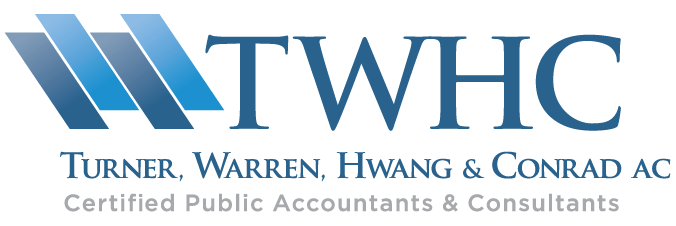When forming a business there are several options available when determining business structure. This article will focus on S corporation benefits and drawbacks and other key considerations when forming a business.
Which selection is made will impact day-to-day operations, taxes and legal liabilities as well as personal risk. In turn, business owners must select the option that offers the right balance of legal protections and tax savings.
Business structure affects tax liability, ability to raise funds, paperwork to be filed and personal liabilities. While business owners may convert to a different structure later, there may be some restrictions and consequences for doing so after a business has been formed. For this reason, it is important to choose the best structure at the outset. Consulting with a licensed certified public accountant before registering a business can prove invaluable.
Common business structures include the following: sole proprietorship, partnership, limited liability company (LLC), C corporation, S corporation, B corporation and non-profit organization. Various factors can affect which structure to select, including the type of business, the plan for the business and short- and long-term goals of the owner(s).
This article will discuss the advantages and disadvantages of registering as an S corporation.
What is an S Corporation?
An S corporation is taxed under Subchapter S of the Internal Revenue code and is essentially a “pass-through” entity that offers tax benefits. S corporations are for-profit corporations and fall under the broader category of C corporations. However, not all C corporations qualify as S corporations. S corporations offer similar protections, ownership and management advantages as C corporations. S corporation benefits include asset protection, pass-through taxation, avoidance of double taxation, and various tax savings related to healthcare, retirement planning, and employee expense deduction.
Advantages of S Corporations
Asset Protection
S corporation benefits include asset protection−a common concern among business owners−and S corporation status draws the line at personal assets. Claims of business creditors whether they may arise from contractual conflicts or litigation can only be remedied from business assets and not the owner’s personal assets. C corporations and limited liability companies also provide this protection.
Pass-Through Taxation
An S corporation is a separate entity from the business owner, and S corporation status allows profits and losses to pass-through to the business owner’s personal income thereby avoiding double taxation. An S corporation is not taxed at the C corporation level, where dividend income is taxed at the corporate level and then the shareholder level. It is important to point out that tax laws vary by state, and some do not recognize S corporation status at all thereby treating the business as a C corporation.
Salary and Dividend Payments
An S corporation owner can choose to receive a reasonable salary and dividend payment from the corporation minimizing the overall tax liability. This is possible because dividends are not subject to self-employment tax. The salary that is paid to the owner is also considered an expense to the business and can be deducted from the income passed through to shareholders.
Conversion
One often overlooked advantage of S corporation status is the ease with which a business can convert to C corporation status. C corporations who wish to convert to S corporation status may be required to file dissolution/withdrawal filings, formation filings and may be subject to unintended tax consequences.
Health Insurance Tax Savings
Most S corporation shareholders are also able to save additional payroll taxes by allowing the S corporation to pay for health insurance coverage, so long as the expense is included as part of wages. This may include health insurance for a spouse so long as family members do not already qualify for a subsidized health care plan and meet other restrictions set forth by the IRS.
While the premiums that are included as part of the shareholder employee’s wages and subject to income tax withholding, the amount paid is deductible for the S corporation expensed as wages paid, the premiums themselves are exempt from employment taxes. The premiums are essentially considered self-employed health insurance and is deductible for the shareholder’s personal income tax return as well, which provides a considerable tax savings.
Employee Expense Deduction
As a result of the Tax Cuts and Jobs Act of 2017, employees are no longer allowed to claim out-of-pocket business expenses on their personal income tax returns. Employees must rely on the employer for reimbursement of these expenses.
For shareholder employees, S corporations can reimburse out-of-pocket business expenses such as home office rent, vehicle mileage, transportation costs, cell phone plans and more. This would require setting up an Accountable Plan and following the recommended guidelines. Through the Accountable Plan, employees can pass their expenses to the S corporation, just as if the business itself incurred those expenses.
Retirement Plan Savings
S corporations benefits include additional savings through a SEP IRP (Simplified Employee Pension Individual Retirement Plan). An S corporation can contribute up to 25% of an employee shareholder’s compensation or $57,000 or 63,500 for age 50 and older, whichever is less, for tax year 2020. If an S corporation is owned by a married couple and has no other employees, a Solo 401(k) plan would allow up to $19,500 or $26,000 for age 50 or older, per employee to be deferred. The Solo 401(k) would reduce the SEP IRA limit applied to the S corporation.
Disadvantages of S corporations
Depending on the type of business, and short- and long-term goals, S corporations can also have some specific disadvantages and broader corporate disadvantages over the option of a limited liability company.
Qualification Requirements
S corporations are subject to specific qualification requirements when electing the S corporation option and to continue to operate as an S corporation. These are mandated by federal tax laws and do not vary by state.
- Only individuals, some estates and trusts, and certain tax-exempt organizations can be shareholders
- There can be no more than 100 shareholders
- There can only be one class of stock (voting rights may vary however)
An LLC for instance, can still operate as a pass-through entity, and would not be subject to the same restrictions. It is worth noting that S corporations and LLCs would still be subject to different sections of the Internal Revenue Code and taxation would vary.
Profit and Loss Allocation
Because an S corporation falls under the broader category of a C corporation, profit and losses must be allocated strictly based on percentage of ownership or number of shares held whereas an LLC has the liberty to allocate profits and losses based on their own preference.
Formalities
As noted earlier, S corporations by definition are corporations and subject to statutory corporate formalities based on its home state. These formalities ensure that the corporation is legally distinct from its owners and require regular meetings for corporate directors or shareholders, separate records for corporate activity, and independent accounts for the corporation. With an LLC election, statutory state formalities are far fewer.
Determining which election is best suited for a business requires careful planning. There is no single perfect option−each election has advantages and disadvantages. It is best to seek the advice of a certified public accountant or tax professional to help find the right balance of tax benefits and legal protections.





